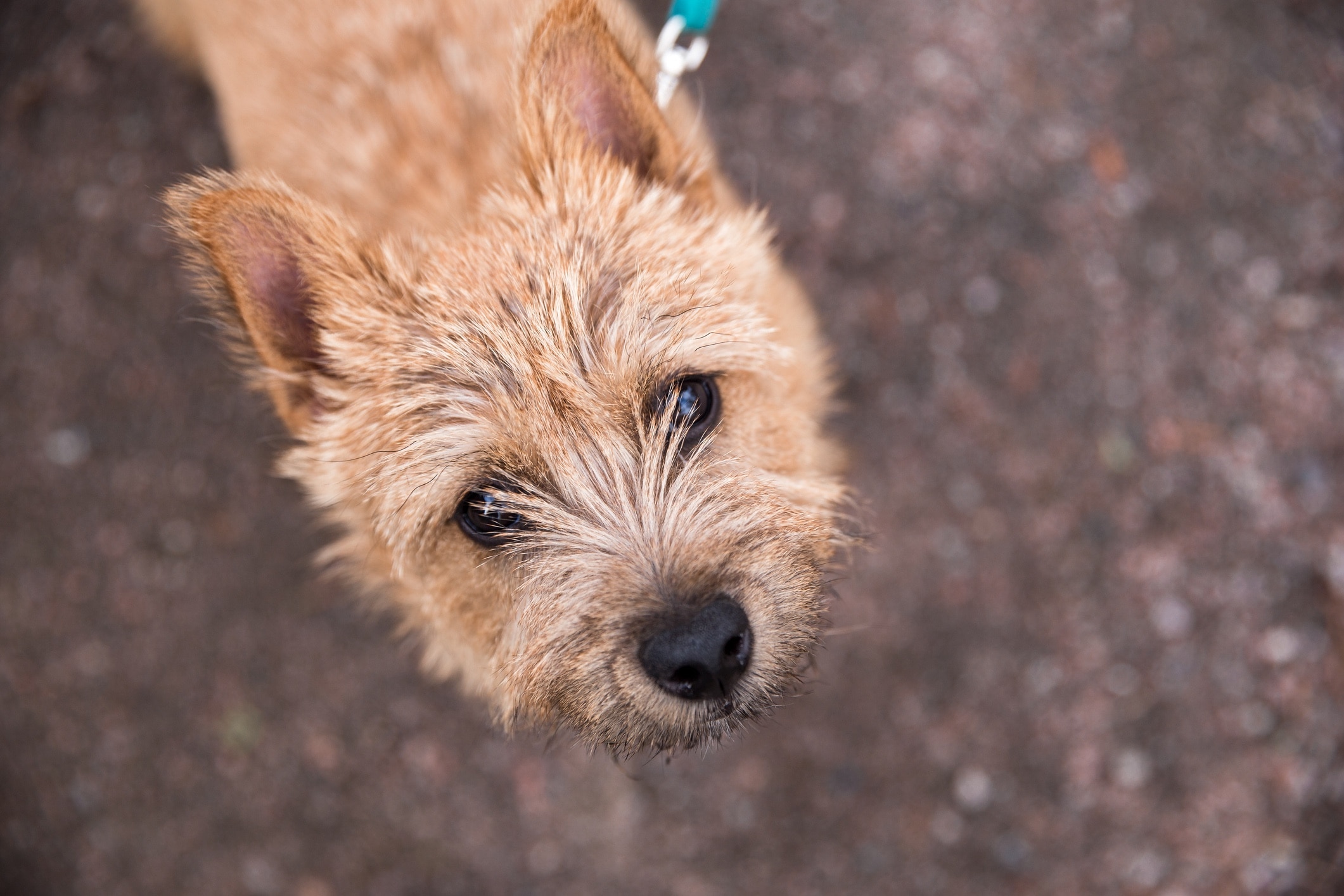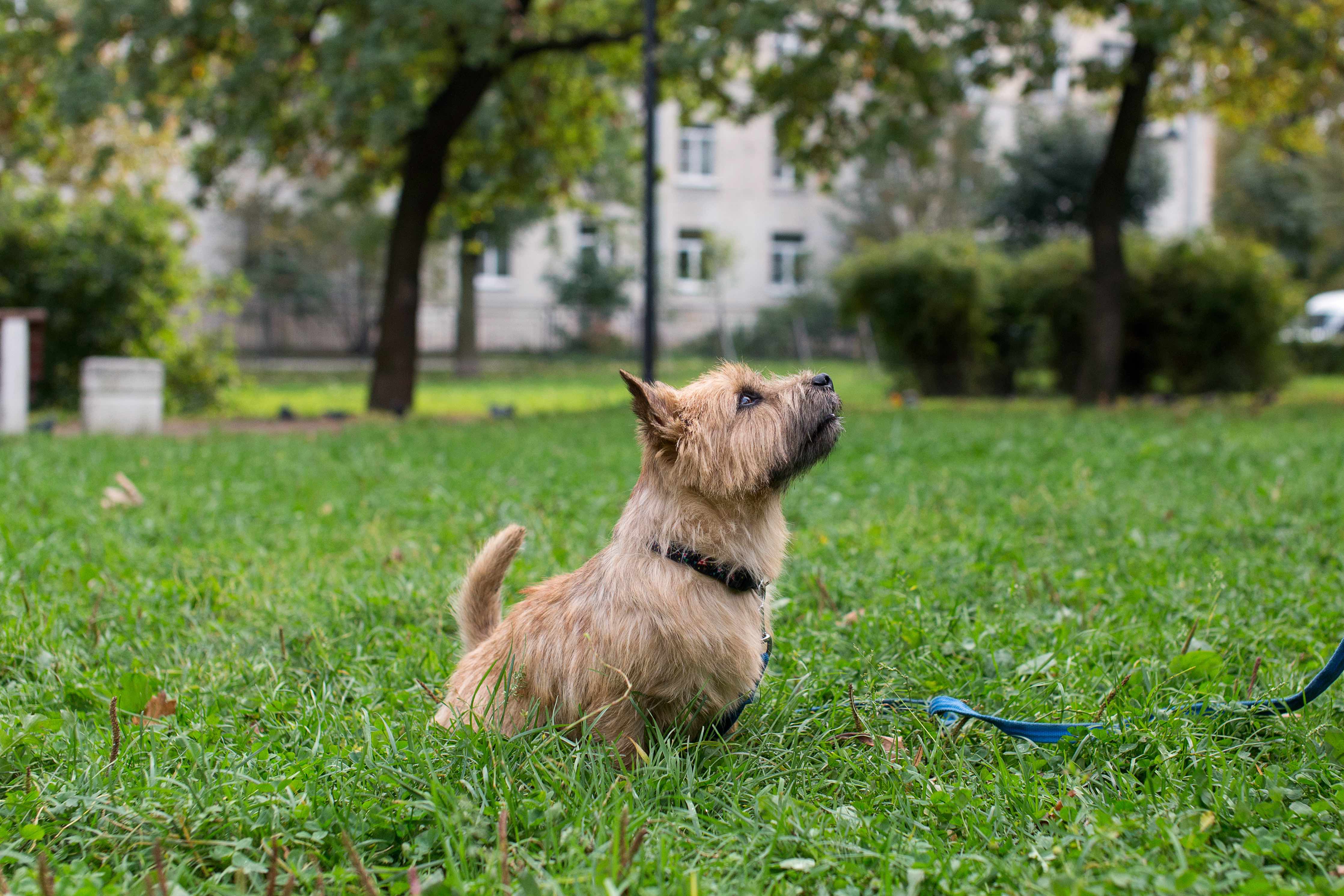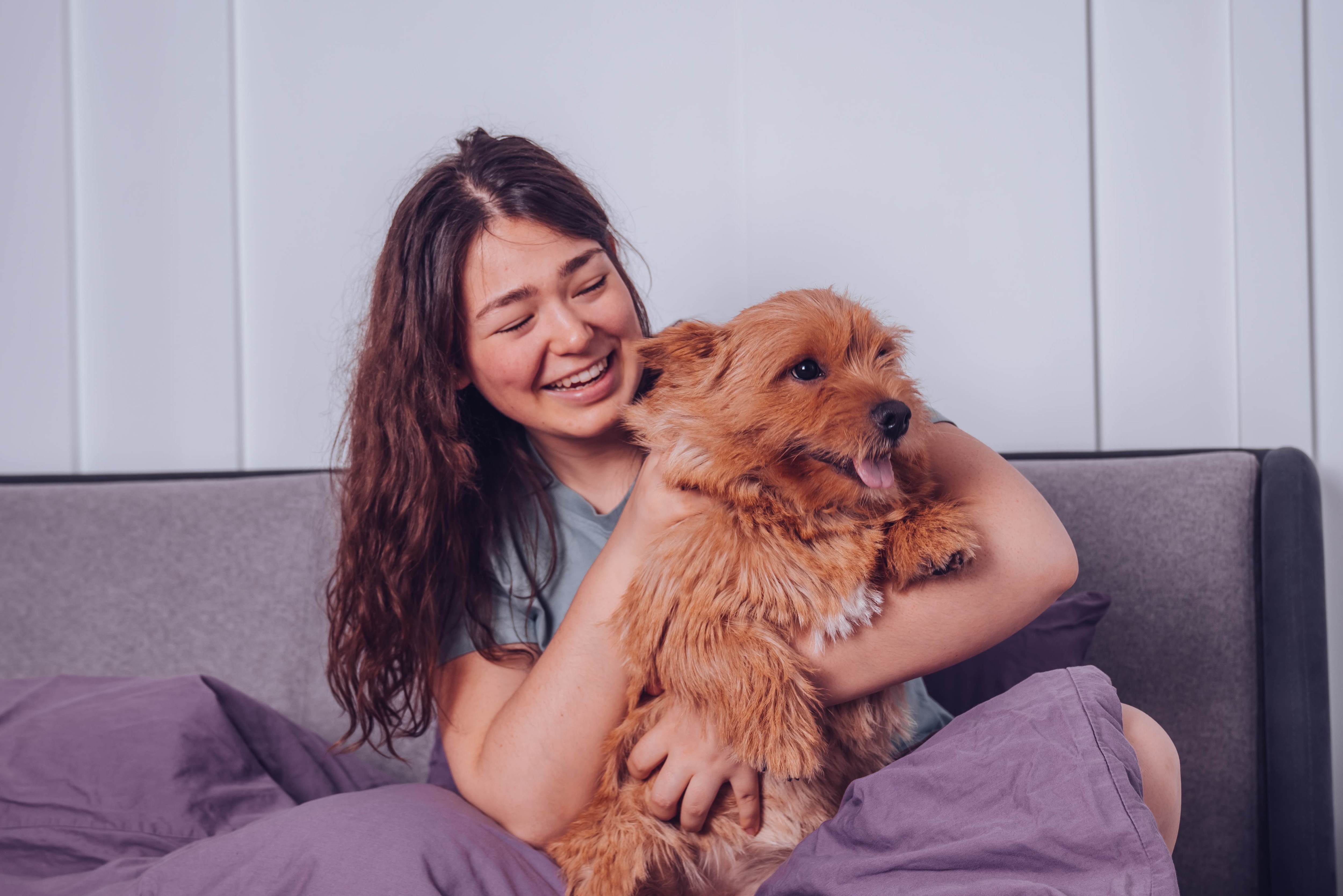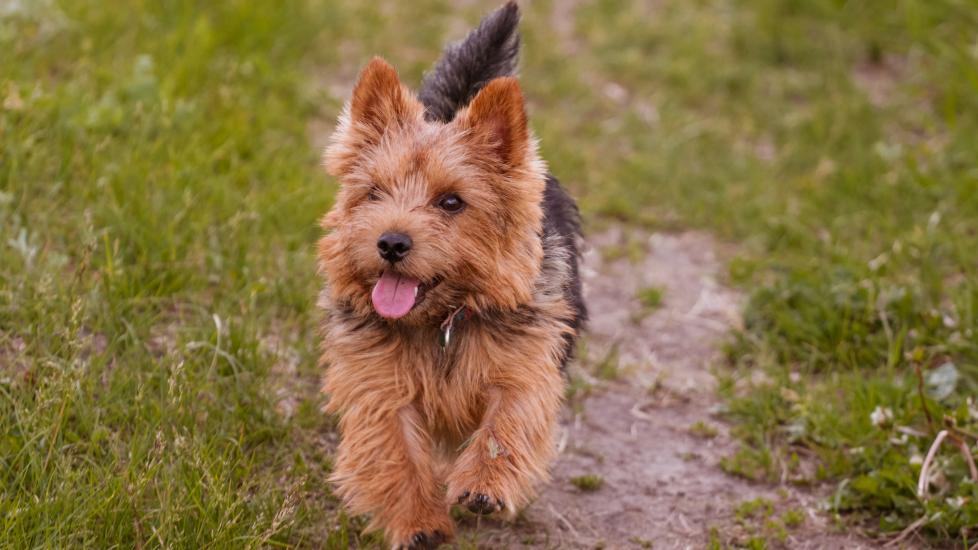Norwich Terrier
Norwich Terriers are spirited and compact dogs known for their friendly demeanor and keen intelligence. Originating in East Anglia, England, during the late 19th century, these small terriers were originally bred for ratting and as skilled hunters, according to the Norwich Terrier Club of America (NTCA).
Their history is intertwined with the Norfolk Terrier, and it wasn't until 1979 that the two were officially distinguished as separate breeds, primarily based on their ears. Norwich Terriers have erect ears, while Norfolk Terriers have dropped ears. Aside from this, the breeds are still quite similar in both physical appearance and temperament.
The Norwich Terrier is characterized by a sturdy build and a wiry, weather-resistant coat in various colors, including red, wheaten, black and tan, or grizzle. The Norwich Terrier stands around 10 inches at the shoulder and typically weighs about 12 pounds.
Caring for a Norwich Terrier
The Norwich Terrier has a friendly temperament, making them excellent family pets. They’re also high-energy and require daily exercise and mental stimulation to be happy. Known for their bold personality, Norwich Terriers are confident and social. They also bond closely with their pet parents, making them excellent companions for families and individuals alike—including families with other pets or children.
Overall, Norwich Terriers thrive in homes where they receive ample attention, exercise, and plenty of love from their pet parents.
Norwich Terrier Health Issues

Norwich Terriers are generally healthy dogs with lifespans averaging 12–15 years. But, like many breeds, they may be predisposed to specific issues.
Luxating Patella
Luxating patella, a common issue in Norwich Terriers, is the dislocation of the kneecap from its normal position. This condition can range from mild to severe, causing intermittent lameness or discomfort.
Treatment may include weight management, moderate exercise, and in severe cases, surgical correction to ensure proper joint function.
Dental Issues
Norwich Terriers are prone to dental problems such as periodontal disease, and regular dental care is an essential job for pet parents. Brushing their teeth regularly, providing dental chews, and scheduling professional cleanings can help prevent many dental issues.
Regular veterinary checkups will help monitor and address these potential dental health concerns.
Tracheal Collapse
Tracheal collapse is a common health issue in small-breed dogs, including Norwich Terriers. This condition is caused by a weakening of the tracheal rings in the windpipe, which eventually flatten out and obstruct a dog’s airway.
Some common symptoms of tracheal collapse include coughing that sounds like a honk, fainting, and fatigue. Initially, tracheal collapse may be treated with steroids and cough suppressants. If medication fails to work, surgery will likely be the next step.
Pet parents of smaller breeds like the Norwich Terrier should walk their dog with a harness rather than a collar to protect their trachea.
What To Feed a Norwich Terrier
When selecting appropriate dog food for a Norwich Terrier, pet parents need to consider the breed's small size, high energy levels, and health concerns.
Choose a high-quality, well-balanced dog food formulated for small breeds. Ensure the food meets their specific life stage requirements, whether puppy, adult, or senior.
Given their susceptibility to dental issues, choose kibble that promotes dental health, such as those designed to reduce tartar and plaque. Additionally, incorporating wet or moist food into their diet can aid in hydration, especially if they are not enthusiastic drinkers.
Always talk with a veterinarian to determine the best dog food for your pet.
How To Feed a Norwich Terrier
For Norwich Terriers, a feeding routine that aligns with their small size and energetic nature is ideal. Consider providing two to three small meals a day (though Norwich Terrier puppies may require more frequent meals) to prevent overeating, as these dogs are prone to obesity.
Pet parents can provide bowls designed to slow down eating, such as puzzle feeders or slow feeder bowls, to help manage the breed’s fast-paced eating habits.
How Much Should You Feed a Norwich Terrier?
Determining the right amount of food for your Norwich Terrier involves considering factors such as age, weight, activity level, and overall health.
Follow the feeding recommendations on the dog food packaging and talk to your veterinarian for advice tailored specifically to your dog. Factors like individual metabolism and energy expenditure can influence the ideal feeding amount, so be attentive to your dog's body condition and work with your vet to adjust portion sizes accordingly.
Nutritional Tips for Norwich Terriers
When Norwich Terriers eat a well-balanced dog food that meets the standards set by the Association of American Feed Control Officials (AAFCO), they shouldn’t need supplements. However, your vet may recommend specific nutritional supplements for your dog depending on their health.
-
Omega-3 fatty acids help maintain a healthy coat and skin while also supporting joint health.
-
Probiotics help maintain a healthy digestive system for dogs with gastrointestinal (GI) sensitivities.
-
Dental chews or supplements can help reduce tartar buildup and promote oral health.
-
Joint supplements can benefit Norwich Terriers with luxating patellas.
Behavior and Training Tips for Norwich Terriers
Norwich Terrier Personality and Temperament

The Norwich Terrier has a friendly and spirited temperament. These dogs are confident, alert, and often exhibit a fearless nature despite their small size. While they have a moderate to high energy level, they adapt well to many living situations, and can live happily in both urban and rural environments.
Norwich Terriers are social dogs that typically get along well with children and other pets. Regular exercise and mental stimulation are imperative in keeping them happy and content.
Norwich Terrier Behavior
Norwich Terriers are known for a bold, curious, and confident attitude. Their curious nature can sometimes lead them into mischief, so it's important to keep them mentally engaged and physically active so they don’t get creative in trying to entertain themselves.
Barking and digging are behaviors that Norwich Terriers might show, which are reflective of their terrier heritage. Remember: They were bred to hunt small vermin such as rodents, so digging and barking are big drives for this breed. Consistent and early training can help manage these behaviors.
Norwich Terrier Training
The Norwich Terrier's intelligence and eager-to-please nature mean they respond well to positive reinforcement training methods, even if they do have an independent streak. Keep training sessions short, engaging, and varied to maintain their interest.
Socializing your Norwich Terrier puppy from an early age is crucial to ensure they are comfortable around new people, animals, and environments.
Special considerations include their strong hunting instincts, which may lead your Norwich to chase small animals. A secure leash and a well-fenced yard are a must.
Fun Activities for Norwich Terriers
-
Obedience training
-
Dog sports (such as flyball or canine freestyle)
-
Hide-and-seek games
Norwich Terrier Grooming Guide

Norwich Terriers have a wiry, weather-resistant double coat that requires regular grooming. While they shed minimally, their coat benefits from routine care to maintain its appearance and prevent matting.
Overall, the breed is considered low-maintenance for grooming. But consistent grooming and attention to specific areas, such as the eyes and ears, are necessary for their overall health and well-being. Regular grooming sessions also provide an opportunity to monitor their skin and coat condition, and it provides dedicated time to strengthen the human-animal bond.
Skin Care
Generally, Norwich Terriers do not require special skin care, and their double coat does a great job protecting their skin. Regular grooming and a balanced diet contribute to overall skin health.
Coat Care
Routine coat care for Norwich Terriers includes regular brushing (at least twice a week) to remove loose hair and prevent matting. Baths should be limited to once every three months, as too much bathing can irritate their skin.
The Norwich’s wiry coat also benefits from hand stripping (removing the hairs from the root instead of trimming) a few times a year to maintain the wiry texture and remove dead hair. Professional grooming may be sought for hand stripping, but it can also be done at home with a little practice.
Matting isn't usually a significant issue if they are groomed regularly, but some of the longer areas of their coat can be prone to matting. It’s important to stay on top of regular brushing.
Eye Care
Norwich Terriers may develop tear stains. Wiping the eye area regularly can help prevent staining. Additionally, trimming excess hair around the eyes can help reduce the likelihood of tear stains.
Ear Care
Regularly check and clean a Norwich Terrier’s ears to prevent wax buildup and reduce the risk of ear infections. Use a veterinary-recommended ear cleaner.
Dental Care
Ideally, try to brush your dog’s teeth at least once a week, but your vet may recommend daily brushing. Get your Norwich Terrier puppy used to the feel of having their teeth brushed so the process will be easier as the dog grows into adulthood.
Beyond daily or weekly brushings, it’s also important to have your dog’s teeth professionally cleaned by your vet at least once a year.
Nail Care
Pet parents must trim their dog’s nails regularly. While most dogs will wear their nails down naturally, a little parental intervention may be necessary about once a month. If you’re not sure how often to cut your Norwich Terrier’s nails, keep in mind that if you can hear them tapping on the floor, it’s time for a trim.
Considerations for Pet Parents

The ideal home for a Norwich Terrier is one where they receive ample exercise and mental stimulation. Due to their energy level, they thrive in an environment where they can engage in regular play and have space to explore.
Norwich Terriers require moderate grooming upkeep, including regular brushing, occasional hand stripping, or professional grooming to maintain their wiry coat. Basic hygiene practices such as nail trimming and ear cleaning are also important. Their grooming needs are manageable, but consistent care is important.
Training and socialization are crucial from a young age. This breed is smart and generally eager to please, but they can also be independent and curious—which can create problems if these dogs don’t receive the training and stimulation they need.
Overall, Norwich Terriers can be a great adoption choice for most families, even those with limited canine experience.
Norwich Terrier FAQs
What’s the difference between a Norwich Terrier and a Norfolk Terrier?
Norwich Terriers have small, erect ears that stand upright and give them a perky, alert appearance. Norfolk Terriers have dropped ears that fold forward, giving them a more subdued look.
The two breeds are similar in size, temperament, and coat, which makes the differences in ear shape the best way to tell Norwich Terriers and Norfolk Terriers apart.
Do Norwich Terriers bark a lot?
Because of their terrier lineage, they tend to be more vocal than other breeds and will most often bark when excited, alerted, or when seeking attention. However, with proper training and socialization (especially if you start early), barking can be managed.
Do Norwich Terriers like to cuddle?
Yes, Norwich Terriers do like to cuddle and are one of the more affectionate breeds in the terrier group. They form strong bonds with multiple family members and will typically seek out closeness, which can include cuddle time on the couch.
Featured Image: Adobe/Елена Вырыпаева
